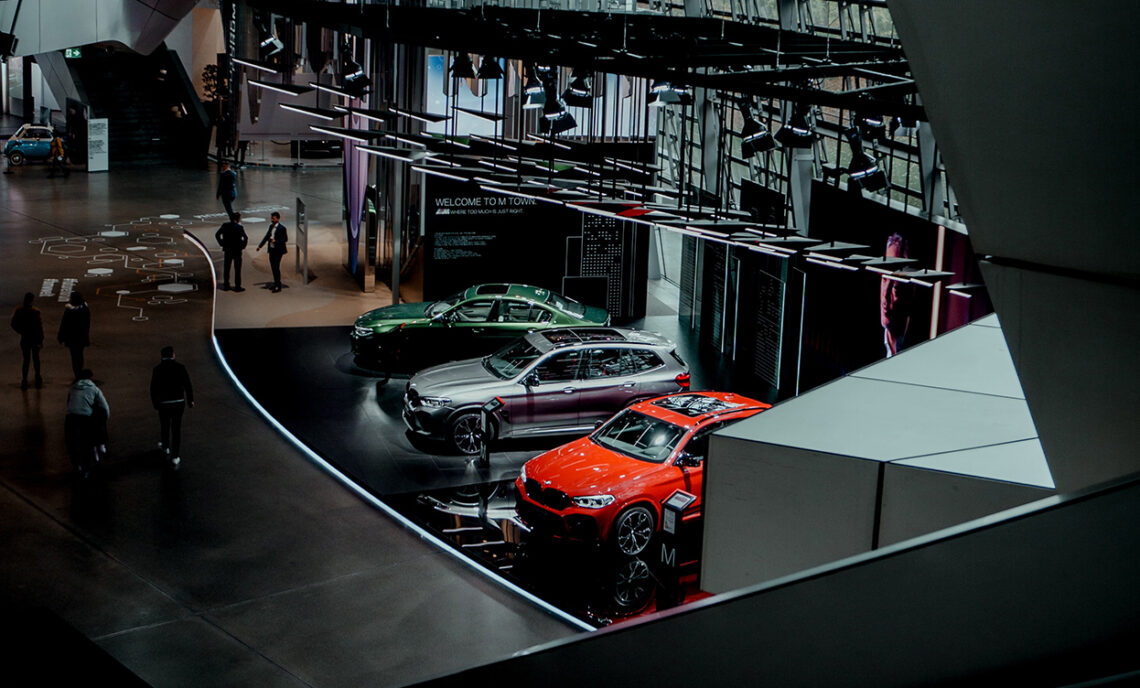
Whether it is an old Chinese proverb or Chamberlains Curse, “may you live in interesting times” is definitely the constant theme for dealers in current and future times.
How did we get here?
For most of us in the industry, life made sense for many decades as the following held true:
- OEM’s made cars and continued to make them better,
- Dealers sold cars and continued to sell them better, and
- Consumers were getting a better end of the bargain, as cars became better, cheaper and the process more transparent.
The problem is that the car industry was a declining sector (“Sunset Industry”) and unfortunately had entered the sunset in the 1970’s.
After successfully revolutionising personal transportation in the early 20th century, eliminating the reliance on horses, the automobile industry experienced an unprecedented surge in growth throughout the first half of that century. This expansion reached its pinnacle during the post-war boom of the 1960s. The challenge arose from the fact that the automobile industry relied on fossil fuels, which were destined to become obsolete alongside the designation of the oil and gas industry as a sunset industry. Sunset does not mean dead, it indicates a gradual decline over time, much like the setting of the sun. This process typically unfolds over several decades, spanning approximately 50 years.
This is not a surprise, the signs have been there for years:
- Declining OEM profitability
- OEM consolidation to reduce costs to survive
- OEM bankruptcies
- Dealer profitability decline
- Dealer consolidation
- OEM volume push to drive profitability
Everyone tried hard, no one wanted to see the automotive industry die, but eventually the customer stepped in and changed the course of the game forever.
The Paris Climate Accord in 2016 was the final nail in the coffin for the industry in its current form, carbon was officially designated the greatest threat to humanity by the people and carbon emitting industries had the go and this put the car industry in its current form directly in the cross hairs.
Fair enough?
The OEMs were clearly put on notice by governments, change the power train to stop emitting carbon or we will take away your ability to play – fair enough?
Personal transportation is still a good thing, we just do not want to see tail pipes emitting things other than water.
Some changed, some got caught out not changing, after a period of catch me if you can, the penny dropped, and everyone got on the same page.
Electric vehicles (EVs) have emerged as the present-day preferred product of choice. While it is uncertain whether they are ultimately the ‘best’ solution, their popularity among the masses has made them the current strategy in place to meet people’s demands and preferences.
Good news
Once the OEMs got their heads around it, it was good news, but as with all change, not everyone is going to be an outright winner.
Dealers have long regarded themselves as adept adjusters to the industry’s greatest challenges.
Some examples include
- When the internet became a sales tool and the dealers’ natural advantage in used cars (as the easy changeover point) impacted volume, they pivoted to selling more new cars.
- When new car gross became difficult as the OEM’s push for volume kept driving prices down, dealers moved from selling cars to selling target, changing the nature of the showroom and the quality of the people in it.
- When front end profitability vanished, dealers focussed on selling finance and insurance to bridge the gap. Problem is that one person’s gross is another person’s expense. Dealer commissions became a problem for the financier’s bottom lines.
- Service became a profit centre in the 90s (before then it was a nice to have), problem was the customers wanted things cheaper and the OEMs wanted the customers coming back for more cars. Since dealers had exchanged selling harder used cars for new cars, this gave the OEM’s control over the service schedule. Less intervals, less hours, more work followed.
When profitability became increasingly challenging, car dealerships responded by consolidating their operations. By growing in size, this enabled them to achieve economies of scale in non-customer facing areas and leverage greater purchasing power with suppliers outside OEMs.
Dealerships have successfully demonstrated their adaptability to ensure their existence and have accomplished remarkable feats in doing so. However, each adjustment was made while operating within the confines of the framework in which they function. Unfortunately, each pivot also moved them towards greater dependency on the OEM’s, hence making their survival increasingly linked to the requirements of the OEM’s.
These changes are structural, and now the industry is moving from the sunset to the sunrise.
The questions dealers need to ask themselves are:
- Am I still relevant in the sunrise?
- Is the OEM on my side for the long haul?
- Do I lead the change or follow and what are the outcomes for both?
- Do my customers want me in or out?
The top 10 challenges for 2024
- EV
- Agency
- Maintaining supply
- Facilities
- Build your own brand
- Own your customers
- People
- Cost structures
- Partnering
- Transition
1. EV
As discussed above they are the future, so as a dealer, it’s about getting onboard.
Problem is they are the destroyer of profit for a dealer in its current configuration.
The facts
The things we know are that at a 75 / 25 ICE to EV ratio dealers can maintain profitability.
At 50/50 its breakeven, at 25/75 you are printing losses.
The solution
Until such time as you are completely ready to pivot to EV’s, you must keep your ICE/EV sales volume at 75/25 by understanding your supply chain of ICE vehicles.
The supply chain
- Used cars (ICE), local and imported
- Slow to EV brands
- Low EV model mix brands
What does pivot to EV’s mean in operational terms
- Recognising the diminishing profitability of service operations – there is no money in it at volume, start consolidation of workshops as RO volumes decline and exit properties.
- You will need to be selling 3 to 5 times your normal volume and grosses (ignore today’s grosses as you know how unprofitable the front end can be)
- Minimum fifty units per sales consultant
- Rent per unit should be below $200 – at a future $1500 gross / agency fee it’s all you can afford
- Align with a financier, electricity provider and subscription provider = it is the future.
- Customer interactions are the lifeblood of your business, you need to manage and influence these interactions
2. Agency
The OEM’s precursor drug for EV’s.
Why?
Dealers exist to support the technical and mechanical needs of an ICE in a certain geography, that’s it!
With no ICE vehicles, you do not need geographically heavy dealer networks. Customers will use a combination of online, push CRM and “car to drive an hour or so to look at new EV’s.
Current unaffordable prices of EV’s (created by the “supply shortage” scenario) will not flow though to the OEM’s agents in commission.
As a sunrise industry, the extra margin flows through to the manufacturer to recoup investment in the innovative technology and make a great profit (it is payback time for the OEM’s).
Agency is the model of choice as it allows:
- Flexibility – Less dealers with less collateral damage at closure for OEMs
- Ability to control price to effectively control market share
- Ability to control share of margin better (commissions are easier to control than profit shares)
- Ability to direct margin to goals (volume-based incentives)
- Ability to exit the distribution model when the time warrants and cut out the middleman
The only truth is that dealers should not hang on to the fact that agency model is dead because it is not working today.
It is the transition model out of the franchise model, the OEMs are learning and defining the process.
Best example is to look at the EV only brands; they either go it alone or align with very large groups who can make a sufficient ROI by volume.
It is important to give serious thought to whether the agency model is truly the future you want. Don’t simply rely on others’ opinions! However, let’s say that at some point, an agency model becomes mandatory in some form. In that case, your best bet is to stay adaptable and be ready to adjust. Take a careful look at the requirements, find creative ways to make it work for your business, and make the necessary changes. The key is to navigate the new rules effectively and ensure your business continues to thrive.
Consider this from the OEM’s perspective, if you were spending billions or trillions of dollars reinventing yourself and wanted to maximise your ROI, would you keep a distribution model that they consider expensive, lacks flexibility and subject to failure due to a lack of profitability by the participants?
The rules are currently being written as we go; we understand agents are being “performance managed” on volume. When we last looked at it, agents did not sell cars or have stock (under agency, that’s the OEM’s job), so we would have thought it’s hard to performance manage dealers on things that are not in their remit.
We see dealers being compelled to make facility upgrades under the risk of termination, without any assurances of future dealer agreements that would offer a reasonable payback period.
An agency agreement is not equivalent to a dealer agreement! Do not think it has the same level of value to you as a dealer.
3. Maintaining supply in a supply constrained market
For dealers, the equation is simple:
- Stock the cars that you sell
- Market them to the customers that you sell them to
The word under most threat here is “sell.”
By following the OEMs down the path of least resistance over the last 20 years, dealers have threatened the existence of the two key assets in their arsenal.
It’s not too late to right the ship.
Always remember in Australia the used car market is 3.5 to 4 million cars per annum and the new car market is one million.
Dealers need to re-earn their share of the largest car market in Australia, and we genuinely believe this is where the dealers need to enlist the full support of the AADA as their peak body.
It’s ok for dealers to have a good relationship with the FCAI or the EV Council. However, for “dealers” (not agents), to survive the focus needs to be on Used Car supply chains and winning back dealer share.
In our opinion, securing imported supply chains is crucial for dealers to gain broader access to the private market. At present, the imported market is almost criminalised, which makes no sense as all of our cars are imported at present anyway – whether they have some KMs on the clock or not is irrelevant.
Rather than working to ban it, the focus from dealers should be on embracing it and make it work within the confines of our current regulatory systems. A Hilux with 20,000 km on the clock driven in Japan can be no worse than a 20,000 km Hilux driven in Australia.
Source of supply and rules around warranty and parts supply are the key.
Given the global decision to cease local production of new cars in Australia, it becomes apparent that focusing solely on a new car import strategy lacks logical reasoning. The reliance on imports poses risks, as supply can be restricted unexpectedly, and pricing can be influenced by external factors beyond our control, as is currently the case.
4. Facilities
Again, simple facts:
- To generate profits, it will be necessary to achieve significantly higher volumes within a significantly smaller square footage.
- Rent per unit will be critical, the front end is historically unprofitable, with low gross / commission and no parts and service you need to really control costs (think Telstra store).
- Avoid any facility upgrades at present as it is not a smart investment, unless it comes with a guaranteed 15 year “dealer agreement” under existing terms (we know this isn’t currently realistic, but why shouldn’t it be?)
- Start planning your current footprint exit – clearly service will diminish first, so look at consolidation and exit strategies over the next 10 years.
- Investigate air rights – car showrooms will still exist, for many dealer locations a mixed-use retail / residential zoning may be perfect. Gives you the ability to tap the property value and keep the showroom.
- Think like an investor not a car dealer
- If the threat is termination, that may be your best investment option. Your car dealing future is uncertain, your property investor future is far more certain. We are not sure the industry you see as fun will be the same for much longer.
- If your facility holds strategic importance for the OEM, consider offering them the opportunity to rent it, or even the option of having residential units built on top of it.
5. Build your own brand
Ask the previous owners of Duttons Garage how they are feeling right now. They built a brand and sold it for a significant sum, there is nothing wrong with that.
Remember, the current future plan is about building someone else’s brand, which is why it is called agency.
If you have a different plan, take the initiative now and create your own destiny.
If you want to continue to play car dealer, make your own rules.
6. Own your customers
You have two key groups taking your market share:
- The OEM’s who really want to get much closer to your customers.
- The direct sellers – aggregators and online.
But still your customers keep coming back to you.
Why, because you make it easy (there is no other reason).
Keep this as your principal focus, whilst your competitors work out how to be easy to deal with, you hold the advantage.
Invest in your complete cradle to grave customer journey (online and physical). Really learn to manage your customers individually through the life cycle.
The time for platitudes is over, you can’t rely on selling cars from the same site, it is simply not sustainable in a rapidly evolving market. You need to use the industry-based suppliers and build a fool proof system.
7. People
If you continue to operate as a traditional “car dealer” and maintain a ratio of 75% internal combustion engine (ICE) vehicles to 25% electric vehicles (EVs), it is likely that there will be limited changes to the immediate roles within your organisation, except for focusing on enhancing the skills and capabilities of your personnel.
In the future “paying more money to a smaller but highly talented workforce” will be the key as productivity levels will need to increase as the backbone drops off and the front end needs to start paying all the bills and making a profit.
The role of non-customer facing staff will be the dramatic shift.
Traditional administration roles (accounting, deal processing, rego’s) will need to be digitised or outsourced as there will not be the volume of transactions, complexity of business or money to support these roles.
Traditional logistics roles (predelivery, reconditioning, vehicle storage, stock control) will need to be centralised to reduce cost per unit and deliver world class service to the selling arms. This will also create the need for more data analysis roles (as we find in fast moving consumer goods) where stock sourcing, stock allocation and consumer preference will drive all buying, reconditioning and delivery outcomes.
Customer creation roles will flourish. Lead generation and CRM will move in-house and dealers will generate their own leads from their customer base and target market population using technology and processes already available in the marketplace.
The end game will be to reduce staffing to around 40-50% of current levels, substantially reducing the cost per unit of customer acquisition by bringing this inhouse. Once this is coupled with the required need to increased volume by 3 to 5 times from existing sq. meter, profits will continue to flow.
In FY24 dealers should consider:
- Building a roadmap and start the process of digitising and outsourcing administrative roles.
- Start the consolidation process around logistics, do not listen to the naysayers, they will always hold you back.
- Build your internal customer acquisition and CRM capabilities and start cutting back on your reliance on external lead generation.
- Invest in your showroom productivity – create an appointing culture, start incentivising activities rather than outcomes and remove all jobs from your selling team that does not involve selling cars. Do a time and motion study, at 40-50 a month they will have little time to do anything else.
- Understand your 75/25 ICE to EV glide path and build your 5-year plan to get to 40% staffing.
- Employing people from the supermarkets or FMCG industry that have done this before, as the model already exists.
8. Cost structures
You just cannot operate a business where people are 70% of your costs and 100% of your gross.
Learn from the supermarkets, turn your customers into stock pickers, baggers, scanners, and cashiers.
Service has too many non-productives, technology can replace most of the non-productive jobs in service. When was the last time after your $300 Coles shop someone took you through the invoice and walked you to your washed car?
These things exist because the OEM wants them and you are paying for them and by the time, they take over fully, service will not exist.
If you have one hundred people today, plan for 40-50 in 5-10 years’ time.
Technology and outsourcing will replace the rest.
In a ground-breaking shift for the industry, you now have the ability and necessity to predict when your revenues will experience a significant decline for the first time. The 75/25 ICE to EV sales mix is the key, follow the market and its pretty certain you will be at 25/75 in 5 years’ time. If you build out your own ICE strategy, you could still be 75/25 in 5 years.
Subject to the direction you choose, you will get a wildly different outcome.
Build out your 5-year sales mix and revenue plan and then your overlaying cost plan to match this. Within that plan, give yourself milestone dates, for example:
- By 2025, I want admin mostly digitised or outsourced.
- By 2026, I want my customer creation centre fully functional and have ceased paying for leads.
- By 2027, I will have a clear position on my service workshops, will I convert some of these into centralised logistics centres and sell the rest.
- By 2028, my headcount should be 40-50% of 2023.
9. Partnering
Not a common term in the car business, as proudly independent operators, partnering is not normally on the radar.
The large organisations will prevail and dominate the industry.
If you paint the EV picture, it looks like this:
- New Cars = Agency
- Average commission $1500 to $2000 subject to volume targets
- Maybe sell some finance, but as the OEM is the vendor, it is their choice whether to share or not
- Maybe sell some aftermarket, but as the OEM is the vendor, it is their choice what the customer can have
- Used cars is your business, your gross and dependent on your ability to control the 75/25 ICE to EV ratio. Do it well, you can access F&I and aftermarket gross. Will you get access to trades, or will they be swept up by the OEM and centrally sold / remarketed
- Service / Parts are at best going to be only 30-40% of current RO volume and 50% of current hours per RO. Again, a lot of this is dependent on your ability in used cars and CRM. OEM and dealers can increase the hourly charge rates but it will not cover the overall decline in ROs and hours per RO.
Therefore, at best estimates you will operate at 50% of your pre-COVID gross profits.
Therefore, survival will be for the biggest and the most adaptable.
Remember, this becomes a pure retail play, so it does not mean that car dealers are the natural players.
Survival will be for the lowest cost, highest customer profile retailers. This could as easily be Harvey Norman Cars, Coles Cars, JB Hi FI Cars. Who is best at low-cost, high-volume marketing with large customer bases?
To maintain relevance in the market, it may be necessary to consider strategic partnerships. In some instances, collaborating with established retailers, rather than dealers, can be beneficial, as your expertise may align with their needs and create mutual opportunities.
10. Do you want to transition from sunset to sunrise?
The key over-arching theme is that the automotive industry is transitioning from sunset to sunrise. This is very exciting! The transition is going to be the hard, however, those that make it through to the sunrise will benefit greatly. There will be winners and losers along the way, but the winners will enjoy continued success in the industry we love under completely different rules to what we know today. With that said, dealers need to start asking themselves the two difficult questions.
Where to next?
1. Apart from money, ask yourself why you do this?
For most dealers, it is the daily cut and thrust, it is the people, it is the peer set and it is the challenge.
2. Paint your forward picture and ask yourself, will this be the same business (is it even the same business today)?
Value still exists in some form, but it is declining as each day passes in the transition period until the future becomes clearer.
We would welcome anyone to tell us that the changes that are coming are not substantial and will not change the fabric of the industry.
We have prepared this article to help paint a picture of the future. If you see a different version, let us know. We value collaborative knowledge-sharing and recognize that diverse perspectives contribute to a richer understanding of the future of the industry.
Let’s all join the dots.





